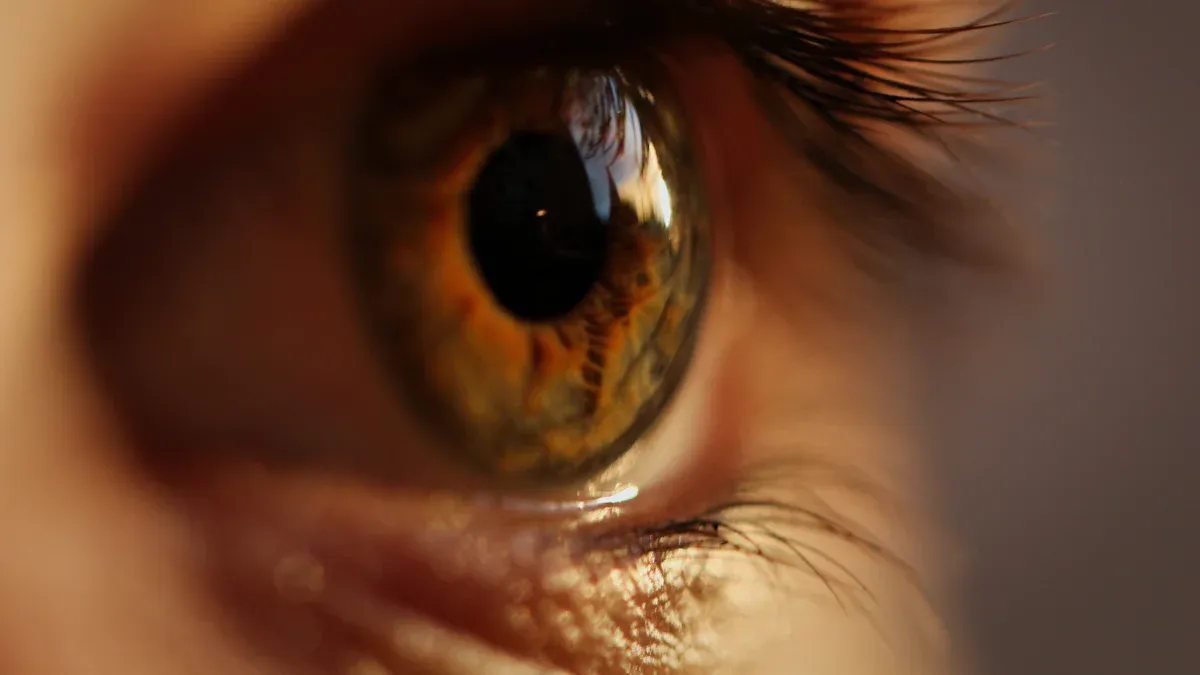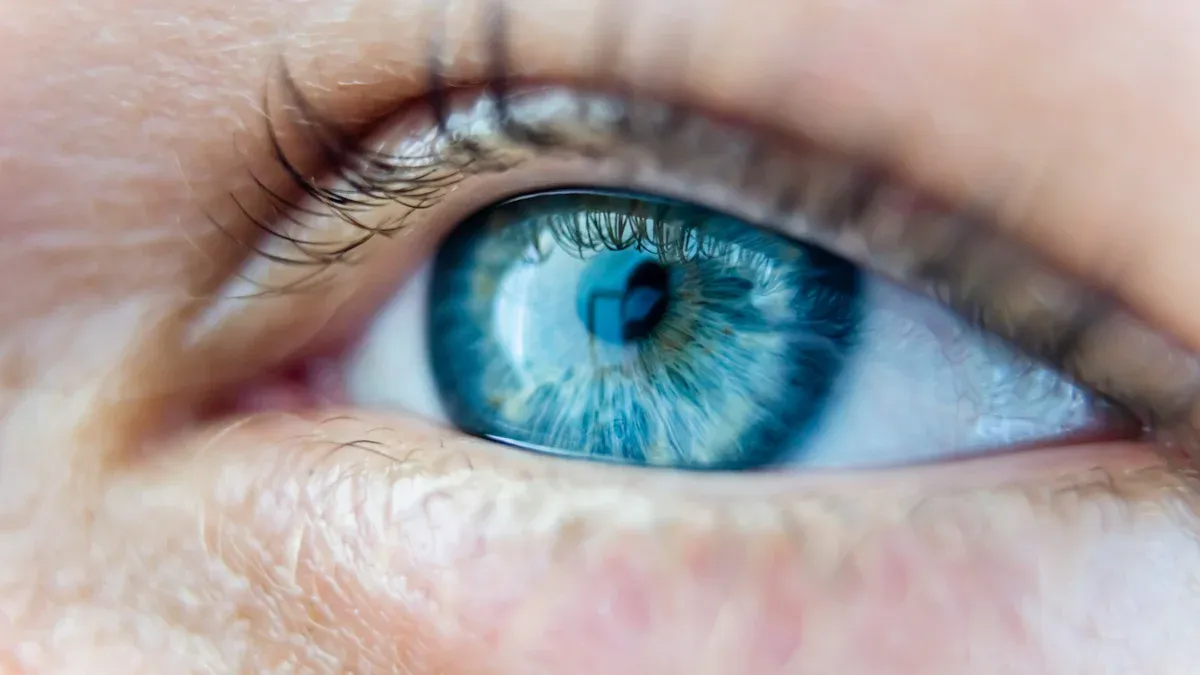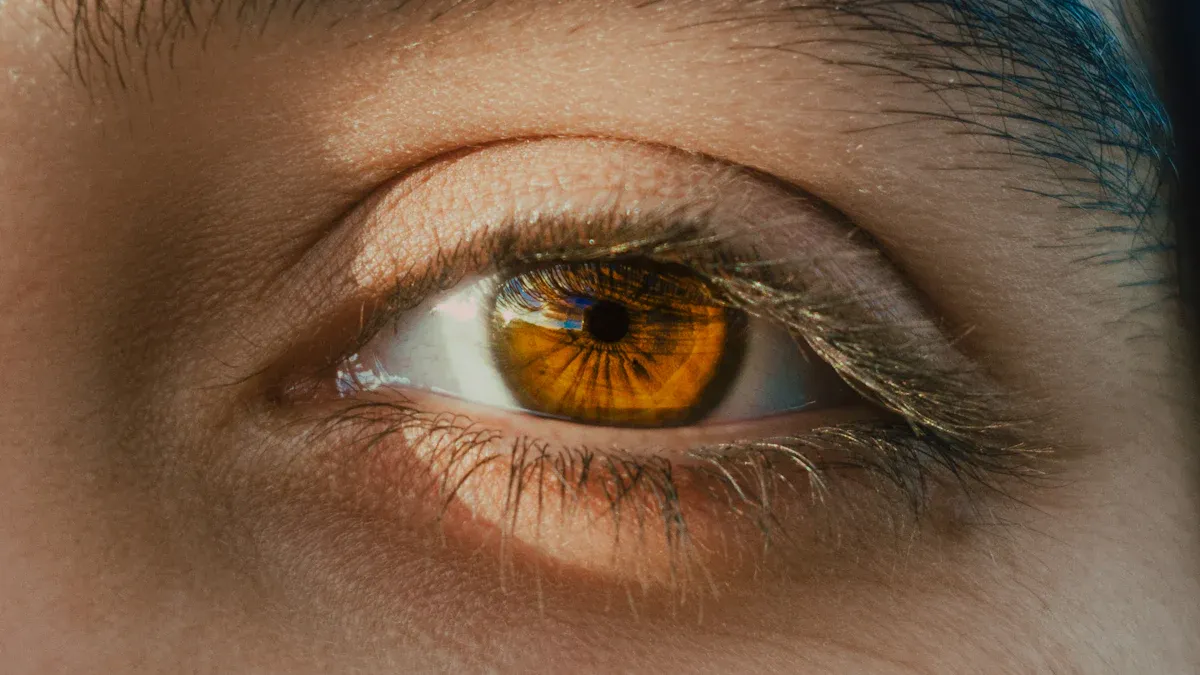Conjunctival Melanoma-Understanding Symptoms and Treatments

Conjunctival melanoma is a rare but serious eye condition. It develops from abnormal pigment-producing cells in the conjunctiva, the thin membrane covering the white part of your eye. Though uncommon, its incidence has been rising globally. For example, the United States saw a 101% increase in cases between 1973 and 1999. In Sweden, men experienced an incidence rate of 0.74 cases per million, while women had 0.45 cases per million, with a steady rise from 1960 to 2005.
Recognizing early signs like unusual growths or persistent redness can save your vision and even your life. Timely treatment improves outcomes significantly. If you notice any unusual changes in your eyes, consult an eye specialist immediately.
Key Takeaways
Look for strange growths or lasting redness in your eyes. Finding it early can protect your sight and health.
See an eye doctor right away if your vision changes. Quick treatment makes a big difference.
Regular eye check-ups are important to watch for conjunctival melanoma. Follow-ups help find it again if it comes back.
Learn about treatments like surgery and new therapies like immunotherapy. Talk to your doctor about these options.
Stay aware of your health. Knowing symptoms and acting fast helps manage conjunctival melanoma better.
Symptoms of Conjunctival Melanoma

Common Symptoms
Pigmented or non-pigmented growth on the eye
One of the earliest signs of conjunctival melanoma is the appearance of a growth on the eye. This growth may be pigmented (dark-colored) or non-pigmented (colorless). You might notice it as a small, irregular patch on the conjunctiva. These growths often stand out because they look different from the surrounding tissue. If you observe such changes, it’s important to consult an eye specialist promptly.
Persistent redness or irritation
Persistent redness or irritation in the eye can also signal conjunctival melanoma. Unlike temporary redness caused by allergies or fatigue, this redness doesn’t go away with rest or over-the-counter treatments. You may feel like something is constantly irritating your eye. This symptom should not be ignored, as it could indicate a more serious underlying condition.
Changes in vision
Conjunctival melanoma can sometimes affect your vision. You might experience blurriness, difficulty focusing, or other visual disturbances. These changes occur when the tumor grows in a way that interferes with the normal function of the eye. Early detection of these symptoms can significantly improve treatment outcomes.
Less Common Symptoms
Pain or discomfort
Although less common, some individuals report pain or discomfort in the affected eye. This symptom may arise as the tumor grows or presses against sensitive areas. If you feel unexplained pain in your eye, it’s worth seeking medical advice.
Swelling or thickening of the conjunctiva
Swelling or thickening of the conjunctiva is another less frequent symptom. This can make the eye appear puffy or uneven. While this symptom might seem minor, it could indicate the presence of a tumor and warrants further investigation.
Importance of Early Detection
Early detection of conjunctival melanoma plays a crucial role in improving survival rates. Studies show that patients diagnosed early have a 5-year survival rate of 83% to 84% and a 10-year survival rate of 69% to 80%. However, the 5-year recurrence rate remains at 39%, emphasizing the need for prompt and effective treatment. Regular eye examinations and monitoring can help identify the condition before it progresses. Experts recommend thorough eye exams, pre-biopsy photographs, and long-term follow-ups to track any changes. These steps not only confirm the diagnosis but also help prevent recurrence or metastasis.
Tip: If you notice any unusual changes in your eyes, don’t wait. Early intervention can make a significant difference in your prognosis.
Diagnosis of Conjunctival Melanoma
Initial Examination
Visual inspection and slit-lamp biomicroscopy
Your doctor will begin with a visual inspection of your eye. They may use a slit-lamp biomicroscope, which provides a magnified view of the conjunctiva. This tool helps identify abnormal growths or pigmentation. However, visual inspection alone has limitations. Some benign lesions, like nevi or acquired melanosis, can resemble conjunctival melanoma. Amelanotic melanoma, which lacks pigmentation, can also be challenging to detect. For these reasons, doctors often recommend further testing to confirm the diagnosis.
Note: A biopsy is essential before starting treatment to ensure an accurate diagnosis and avoid unnecessary procedures.
Diagnostic Tests
Biopsy of the lesion
A biopsy is the most reliable way to diagnose conjunctival melanoma. During this procedure, your doctor removes a small sample of the lesion for laboratory analysis. Advanced techniques, such as ultrasound biomicroscopy (UB) and anterior segment optical coherence tomography (AS-OCT), assist in planning the biopsy. These imaging methods provide detailed views of the tumor's size and location, ensuring precise sampling. Recent advancements, like ultra-high-resolution OCT, offer even better visualization, especially for pigmented lesions.
Imaging tests (ultrasound, MRI)
Imaging tests play a crucial role in evaluating conjunctival melanoma. Ultrasound biomicroscopy confirms the tumor's presence and measures its thickness. MRI scans are particularly useful for detecting orbital extension or metastasis to other areas, such as the brain or liver. These imaging techniques complement the biopsy by providing a comprehensive view of the tumor's characteristics and spread.
Tip: An abdominal ultrasound may also be performed to check for liver metastases, a common site for this cancer.
Staging and Risk Assessment
Staging helps determine the severity of conjunctival melanoma and guides treatment planning. Factors like tumor thickness, location, and ulceration influence the staging process. Tumors thicker than 2 mm or located in non-bulbar areas, such as the medial conjunctiva, carry a higher risk of metastasis. Sentinel lymph node biopsy may also be considered to detect micro-metastases. Regular follow-ups with an ocular oncologist ensure that the staging remains accurate and up-to-date.
Factor | Description |
|---|---|
Tumor Thickness | Thickness greater than 2 mm is associated with higher metastatic rates. |
Location | Non-bulbar conjunctival locations, especially medial and caruncular, increase risk of spread. |
Ulceration | Presence of ulceration on the tumor surface is a significant risk factor. |
Local Recurrence | Previous local recurrence indicates a higher risk of metastasis. |
Callout: Early and accurate staging improves treatment outcomes and helps prevent complications.
Treatment Options for Conjunctival Melanoma

Surgical Treatments
Wide local excision
Wide local excision is the primary surgical approach for conjunctival melanoma. During this procedure, your surgeon removes the tumor along with a margin of healthy tissue to reduce the risk of recurrence. This method has shown promising outcomes:
5-year survival rates fall between 74% and 86%.
10-year recurrence rates vary from 31% to 59%.
10-year survival rates range from 41% to 78%.
Combining wide excision with cryotherapy has led to complete resolution in 72% of cases. However, regular follow-ups remain essential due to the possibility of recurrence.
Cryotherapy for tumor margins
Cryotherapy is often used alongside surgery to freeze and destroy any remaining cancer cells at the tumor margins. While effective, it carries potential risks:
Damage to ocular structures like the conjunctiva, cornea, or iris.
Long-term complications, including dry eye symptoms or limbal stem cell deficiency.
Rare but severe issues like scleral melting or intraocular pressure changes.
Your doctor will carefully weigh these risks against the benefits to ensure the best outcome.
Non-Surgical Treatments
Topical chemotherapy
Topical chemotherapy offers a non-invasive option for treating conjunctival melanoma, especially for extensive or multifocal lesions. It works well for superficial or intraepithelial melanoma and can treat the entire ocular surface. Common agents include interferon-α2b and 5-fluorouracil. This treatment is often used as an adjunct to surgery, either before or after, to target residual cancer cells.
Radiation therapy
Radiation therapy provides another non-surgical option. Strontium-90 beta radiotherapy has a low recurrence rate of 10% and mild side effects like dry-eye symptoms. External beam radiotherapy (EBRT) achieves complete resolution in 85% of cases but has a higher recurrence rate of 37%. Side effects of EBRT include local tissue damage and, in rare cases, metastasis or fatalities. Your doctor may recommend radiation therapy based on the tumor's size and location.
Advanced Treatments
Immunotherapy
Immunotherapy represents a cutting-edge approach to treating conjunctival melanoma. Immune checkpoint inhibitors like nivolumab and pembrolizumab have shown success in managing this condition. For example, four patients treated with nivolumab remained disease-free for 36 months. Researchers are also exploring new targets, such as the epigenetic modifier EZH2, which has shown promise in reducing tumor growth in laboratory studies.
Targeted therapies
Targeted therapies focus on specific genetic mutations, such as those in the MAP kinase pathway. These treatments have demonstrated response rates of approximately 70% in cases of locally advanced or recurrent conjunctival melanoma. By inhibiting pathways activated by BRAF mutations, targeted therapies offer hope for patients with limited options.
Note: Advanced treatments like immunotherapy and targeted therapies are typically reserved for cases where traditional methods are insufficient or when the disease has spread.
Post-Treatment Monitoring
After treatment for conjunctival melanoma, monitoring plays a critical role in managing your health. Regular follow-ups help detect recurrences or metastatic disease early, improving your chances of successful intervention.
Importance of Follow-Up Care
Conjunctival melanoma has a high recurrence rate, with studies showing an average local recurrence of 40% within 2.4 years. Factors like tumor thickness, incomplete excision, and non-limbal tumor location increase this risk. Regular monitoring allows your doctor to identify and address these issues promptly. You should schedule follow-ups with a trained ocular oncologist who specializes in managing this condition.
Recommended Monitoring Protocols
Your follow-up care will include physical examinations and imaging studies. These steps ensure that any signs of recurrence or metastasis are detected early. Below is a summary of the recommended protocols:
Monitoring Frequency | Examinations | Imaging Studies |
|---|---|---|
Physical examination, including lymph node palpation | Annual chest X-rays and brain MRI | |
Sentinel lymph node biopsy suggested |
During physical exams, your doctor will check for abnormalities in the preauricular or submandibular lymph nodes, as these are common sites for metastases. Imaging studies, such as chest X-rays and brain MRIs, help detect spread to the lungs or brain.
Tip: Consistent follow-ups with your ocular oncologist can significantly reduce the risk of complications.
Recognizing Signs of Recurrence
You should stay alert for symptoms that might indicate a recurrence. These include new growths on the eye, persistent redness, or changes in vision. Metastases often appear in the lymph nodes, lungs, or brain. If you notice swelling in your neck or experience unexplained headaches, consult your doctor immediately.
By adhering to these monitoring protocols, you can take proactive steps to safeguard your health and well-being. Regular check-ups and imaging studies ensure that any issues are addressed before they become severe.
Prognosis and Long-Term Care
Factors Affecting Prognosis
The prognosis of conjunctival melanoma depends on several critical factors. Tumor size and spread significantly influence survival rates. For instance:
Tumors thicker than 2 mm or located in unfavorable areas, such as the caruncle or non-bulbar conjunctiva, carry a higher risk of metastasis.
Mixed cell types increase the risk three-fold compared to pure spindle-cell types.
Histological features, such as lymphatic invasion or initial tumor thickness greater than 4 mm, raise the risk four-fold.
Tumors originating de novo (not from pre-existing lesions) also show higher metastatic rates. Multifocal tumors, even in favorable locations, increase the risk five-fold. These factors highlight the importance of early detection and precise staging to improve outcomes.
Note: The 5-year survival rate for conjunctival melanoma ranges from 83% to 84%, while the 10-year survival rate drops to 69%-80%. Regular monitoring can help manage these risks effectively.
Importance of Follow-Up Care
Regular eye exams
Consistent follow-up care is essential for managing conjunctival melanoma. You should schedule regular eye exams with an ocular oncologist to detect any signs of recurrence or metastasis early. Studies show that the average recurrence rate is 39% within five years, emphasizing the need for vigilant monitoring. During these exams, your doctor will check for abnormalities in the lymph nodes and perform imaging studies like MRIs or chest X-rays to assess for metastasis.
Tip: Early detection of recurrence can significantly improve your chances of successful treatment.
Psychological support
Dealing with conjunctival melanoma can take a toll on your emotional well-being. Anxiety and depression are common during treatment, but psychological support can help you manage these challenges. Research on similar conditions shows that patients often experience fragile emotional states initially. However, with proper support, many report improved emotional health within a year, leading to a better quality of life. Seeking counseling or joining support groups can provide the emotional resilience you need during this journey.
Conjunctival melanoma is a serious condition, but understanding its symptoms and treatment options can make a difference. You should watch for signs like unusual growths, persistent redness, or changes in vision. Early diagnosis through exams and imaging tests ensures better outcomes. Treatments range from surgery to advanced therapies like immunotherapy.
Reminder: Early detection saves lives. Regular follow-ups help prevent recurrence and manage risks effectively.
If you notice any unusual changes in your eyes, consult an eye specialist right away. Taking action now can protect your vision and overall health.
FAQ
What is conjunctival melanoma, and how does it differ from other eye conditions?
Conjunctival melanoma is a rare cancer that develops in the conjunctiva, the thin membrane covering your eye. Unlike common eye conditions like conjunctivitis, it involves abnormal pigment-producing cells and can spread to other parts of your body if untreated.
Can conjunctival melanoma affect both eyes?
No, conjunctival melanoma typically affects only one eye. If you notice unusual growths or persistent redness in either eye, consult an eye specialist immediately for evaluation.
Is conjunctival melanoma hereditary?
Conjunctival melanoma is not usually hereditary. However, genetic mutations, such as those in the BRAF gene, may play a role. If you have a family history of melanoma, discuss your risk factors with your doctor.
How can I reduce my risk of developing conjunctival melanoma?
Protect your eyes from UV exposure by wearing sunglasses with UV protection. Regular eye exams can also help detect early changes. If you have a history of atypical moles or skin melanoma, inform your eye doctor.
What should I do if I suspect I have conjunctival melanoma?
Schedule an appointment with an eye specialist immediately. Early detection improves treatment outcomes. Avoid self-diagnosing or delaying medical care, as this condition requires professional evaluation and management.
Tip: Keep track of any changes in your eyes and report them to your doctor promptly.
---
ℹ️ Explore more: Read our Comprehensive Guide to All Known Cancer Types for symptoms, causes, and treatments.
See Also
Exploring Adrenocortical Adenoma Symptoms And Available Treatments
Key Insights Into Anal Cancer Symptoms And Their Causes
Essential Information Regarding Symptoms Of Adrenocortical Carcinoma
